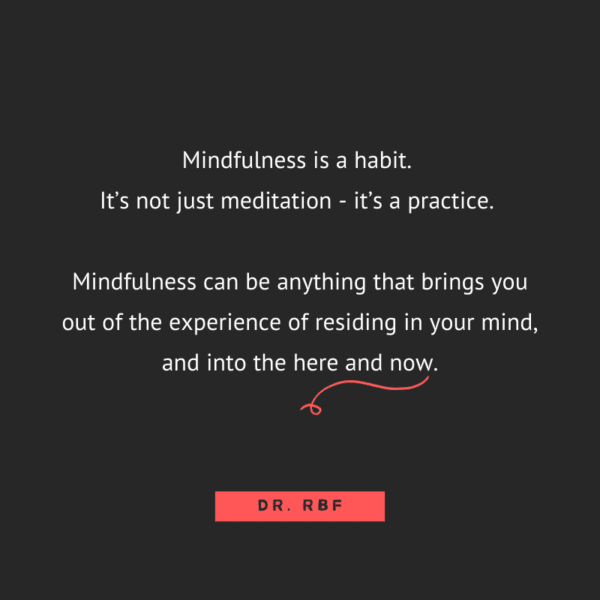
03 May How Your Brain Makes You Unhappy When You’re Doing Nothing
Imagine yourself sitting on the shore. Feel the warm sun on your skin; hear the crash of the waves.
Take a few minutes. Notice what happened. Were you able to stay focused? Or did your mind start to wander?
For most of us, our mind starts to wander quickly. After finishing a task, we start down the well-worn path of daydreaming within a fraction of a second. We scamper away from the present moment, either criticizing ourselves for something that has already happened (I should have done that better! Why did I say that?), or we slide down the rabbit hole of the future (I need to buy groceries. When will I have time to exercise? Did I answer that query from my boss?).
Welcome to your Default Mode Network.
I’ve written about the Default Mode Network (DMN) in “the before times” and I’m now revisiting the topic because it’s even more important today as we work towards our new normal.
The pandemic has brought forth increased levels of stress, unhappiness, disconnection, suicide, divorce, depression, and anxiety. The US spent over 3 billion dollars annually on mental health care before the pandemic. The cost to individuals, companies, and governments is only going to go up from where it was. And that’s exactly what brings me back here again.
In order to change, we have to slow down to recognize that it’s what we aren’t doing that matters. We have to pay attention to what’s happening when we are doing nothing. That’s where the rubber hits the road.
Back to the science. The DMN is an organization of brain regions which interact with each other and are distinct from other brain systems. We use the DMN on a day-to-day basis (how to move through the world) and contain the structure of the self (how we are in the world). This network of neurons is responsible for memories, feelings, and reactions, as well as how you understand other people’s behaviors and feelings, and organizes our memories and our thoughts about the past.
On the plus side, the DMN important is what makes you, you. This thing is the amalgam of all of your experiences, thoughts, feelings, hopes, dreams, and fears. The DMN is what makes us able to look at a face and recognize it as a face; and it allows us to complete a task without having to learn it anew each time. The DMN is what reminds you not to eat the sushi that got you sick that one time, or evokes feelings when hearing a certain song. Accordingly, the DMN is modulated by everything that affects us: sleep, food, sex, exercise, acupuncture, meditation, drugs, etc. You name it, and it’s probably got something to do with how you experience the world.
Now, the problem with the DMN is that while this network of neurons is what allows us to operate on a day to day basis, we also get caught, ensnared, and reduced to the misery of rumination or habitual thinking. When you get “stuck” and start churning through your go-to mode of chasing whatever monkey-brain you have, that is also the DMN doing it’s thing.
So while you can’t, and don’t want to, get rid of the DMN, the goal is to be aware of its pitfalls and perils so you can use them to your advantage.
It turns out that people who spend the most time engaged with their DMN report higher levels of unhappiness. People report being happiest when fully engaged in an activity. That moment of presence shuts down the DMN.
To clarify, I’m not saying that mind wandering is bad. We all need time to allow our minds to be idle, but the question is how much time do you need, and where do you wander? If you wander towards criticizing yourself for what you did in the past, or futuring yourself into a tangled mess of nerves, then I’d say the mind-wandering isn’t helping one bit.
That’s where mindfulness comes in. Mindfulness is a habit. It’s not just meditation – it’s a practice. Mindfulness can be practiced while skiing, fishing, knitting, meditating, or having sex. Mindfulness can be anything that brings you out of the experience of residing in your mind, and into the here and now.

Here are three things you can try to get out of you head and into the moment:
- Practice mindfulness by cultivating a movement practice – yoga, running, skiing, or whatever you like that allows you to get into your body and feel alive.
- Practice mindfulness by cultivating a meditation practice – use an app, find a class, for 5 minutes a day, more days than not. Notice what comes up, and keep doing it anyway.
- Practice mindfulness by cultivating an awareness practice – journal, use therapy, read books on the topic. Notice where the sticky points are, and turn your attention there.
Try one, two, or all three of these types of mindfulness practices and notice if there are subsequent changes in your feelings and thoughts. This works, but requires change, and that’s the part no one can do for you.
You’ve got to show up and start being instead of doing.




